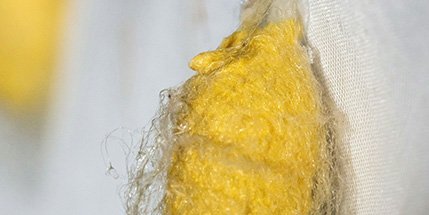Silkworms, scientifically known as Bombyx mori, play a pivotal role in the production of silk, a material prized for its durability, luster, and luxurious feel. These remarkable insects belong to the order Lepidoptera, which encompasses moths and butterflies. Understanding the life cycle of silkworms is crucial not only for optimizing silk production but also for advancing biological studies that contribute to various scientific fields.

The species Bombyx mori is the most commonly cultivated silkworm for silk production. This domesticated species has been selectively bred over thousands of years to enhance its silk-producing capabilities. Unlike its wild counterparts, Bombyx mori depends entirely on human care for survival, making it a fascinating subject of study for entomologists and biologists alike.
Silkworms have a life cycle that includes four distinct stages: egg, larva, pupa, and adult. Each stage offers unique insights into the growth and development of these organisms. The intricate process of metamorphosis, where the larva transforms into an adult moth, is particularly noteworthy and has been a subject of extensive research. By understanding these stages, scientists and silk producers can optimize breeding techniques and improve the quality and yield of silk.
Moreover, the study of silkworms extends beyond silk production. Their genetic makeup, developmental biology, and immune responses provide valuable data that can be applied to other scientific disciplines. For instance, research on silkworms has contributed to advancements in genetics, molecular biology, and even biotechnology.
In essence, the life cycle of silkworms offers a rich tapestry of information that is indispensable for both practical applications in silk production and theoretical research in biology. As we delve deeper into each stage of their life cycle, the significance of these humble insects becomes increasingly apparent, underscoring their importance in both industry and science.
Stage 1: Egg – The Beginning of Life
The life cycle of the silkworm commences with the egg stage, marking the very beginning of life. Silkworm eggs are minuscule, typically measuring about 1 millimeter in diameter. Their appearance varies from pale yellow to light grey, and as they mature, they may turn darker. These eggs are laid by the adult female moth, which deposits them in clusters on the leaves of mulberry trees, the primary food source for the larvae.
The process of laying eggs is quite fascinating. After mating, the female moth lays between 300 to 500 eggs. She carefully places them on the underside of mulberry leaves, ensuring they are well-protected and have immediate access to food upon hatching. The eggs are then left to undergo a period of dormancy before they hatch into larvae, or caterpillars.
The duration of the egg stage is highly dependent on environmental conditions, with temperature and humidity playing crucial roles. Under optimal conditions, where the temperature is maintained between 24 to 27 degrees Celsius and humidity ranges from 75% to 85%, the eggs typically hatch within 10 to 14 days. However, deviations from these ideal conditions can either prolong or shorten this period. For instance, lower temperatures may extend the incubation period, while higher temperatures can accelerate it, albeit at the risk of reducing hatch rates if the extremes become too pronounced.
It is imperative to maintain a stable environment to ensure successful hatching. Fluctuations in temperature and humidity can adversely affect the eggs, potentially leading to lower hatch rates or even mortality. Therefore, sericulturists often employ controlled environments to monitor and regulate these parameters, enhancing the likelihood of a healthy batch of silkworm larvae.
In conclusion, the egg stage is a critical phase in the life cycle of the silkworm, where meticulous attention to environmental conditions is essential to foster successful hatching and ensure the continuity of this fascinating biological process.
Stage 2: Larva – The Feeding and Growing Phase
The larval stage, often referred to as the caterpillar stage, is the most critical phase in the life cycle of the silkworm for silk production. During this period, the silkworm undergoes significant growth and development, ultimately preparing itself for the subsequent stages of its life cycle. The larva emerges from the egg as a small, black, bristly caterpillar and immediately begins its voracious feeding phase.
The primary diet of silkworm larvae consists of mulberry leaves, which are rich in nutrients essential for their rapid growth. The larvae exhibit a highly efficient feeding pattern, consuming leaves almost continuously. This relentless feeding is necessary to fuel their development, as they must accumulate substantial energy reserves to support the silk production process. The continuous consumption of mulberry leaves causes the larvae to grow exponentially in size within a matter of weeks.
During the larval stage, the silkworm undergoes a series of molting phases known as ‘instars.’ These instars are crucial periods of growth where the larvae shed their old exoskeleton to accommodate their increasing size. Typically, silkworms experience five instars, each marked by a molt. With each successive instar, the larvae become larger and more robust, ultimately reaching their full size by the end of the fifth instar.
The molting process is complex and involves the secretion of a new, larger exoskeleton underneath the old one. Once the new exoskeleton is fully formed, the larva sheds the old one in a process that can take several hours. This cyclical process of feeding and molting ensures that the silkworm larvae achieve optimal growth and development, setting the stage for the subsequent pupal phase, during which the silkworm will spin its valuable silk cocoon.
Understanding the larval stage of silkworms is essential for optimizing silk production. Proper care and an ample supply of nutritious mulberry leaves are crucial during this phase to ensure the health and productivity of the larvae, ultimately leading to high-quality silk output.
Stage 3: Pupa – The Transformation Period
The transition from larva to pupa represents a critical phase in the life cycle of the silkworm. During this period, the larva undergoes a remarkable transformation as it prepares to become an adult moth. This stage is marked by the silkworm’s ability to produce silk fibers, a process that begins with the spinning of the cocoon.
As the larva reaches the end of its growth stage, it ceases to eat and seeks a suitable location to initiate the spinning process. The silkworm produces silk fibers through specialized glands known as the sericteries, located in its head. These glands secrete a protein called fibroin, which solidifies upon contact with air, forming the long, continuous filaments that make up the cocoon. The larva methodically spins these fibers in a figure-eight pattern, creating a protective layer around itself.
The duration of the pupal stage varies but generally lasts between 10 to 14 days. During this time, the silkworm undergoes significant internal changes within the cocoon. The larval tissues break down and reorganize to form the structures of the adult moth. Optimal development conditions for the pupa include a stable temperature of around 25-28 degrees Celsius and a humidity level of approximately 60-70%. These conditions ensure that the metamorphosis process proceeds without interruption.
Inside the cocoon, the developing pupa is shielded from external threats and environmental fluctuations. This protective environment is crucial for the successful completion of the transformation. As the pupa matures, it eventually emerges as an adult moth, ready to continue the life cycle. The cocoon, which houses the pupa during this period, remains a valuable source of silk, harvested for various textile applications.
Stage 4: Adult Moth – The Reproductive Stage
The journey of a silkworm culminates in its transformation into an adult moth, a process marked by significant changes. Upon completion of the pupal stage within the cocoon, the adult moth emerges. This metamorphosis is a marvel of nature, showcasing the delicate balance of development and adaptation. The adult moth’s emergence from the cocoon is facilitated by the secretion of an enzyme that softens the silk fibers, allowing it to break free.
Once emerged, the adult moth undergoes several physical transformations. It possesses a pair of wings, typically creamy white in color, adorned with distinct markings. These wings are essential for mobility, although the moths are not strong fliers. The adult moths also develop well-defined antennae, which play a crucial role in detecting pheromones during the mating process.
The primary objective of the adult moth is reproduction. The mating process is initiated by the release of pheromones by the female moth, attracting male moths. This chemical communication is vital for ensuring successful mating. After copulation, which can last several hours, the female proceeds to lay her eggs. A single female moth can lay between 300 to 500 eggs, which are carefully deposited on leaves or other surfaces. These eggs mark the beginning of a new silkworm life cycle.
The lifespan of the adult moth is relatively short, typically ranging from 5 to 10 days. During this period, the moths do not feed, as their primary focus remains on reproduction. This limited lifespan underscores the urgency with which they must mate and lay eggs to ensure the continuity of their species.
The adult moth plays a pivotal role in the silk production process, as the eggs laid will eventually hatch into larvae, continuing the cycle. The reproductive stage, therefore, is not only the culmination of the silkworm’s life cycle but also the genesis of a new generation, perpetuating the intricate and fascinating journey from egg to silk.
Environmental Factors Influencing the Life Cycle
The life cycle of the silkworm is intricately linked to its surrounding environmental conditions. Temperature, humidity, and food availability are critical factors that significantly influence each stage of the silkworm’s development, from egg to silk production.
Temperature plays a pivotal role in the growth and development of silkworms. Optimal temperatures range between 24°C to 28°C. If temperatures fall below this range, development slows down, leading to extended life cycles and reduced silk yield. Conversely, temperatures exceeding this range can cause heat stress, adversely affecting the health and productivity of the silkworms. Maintaining a consistent, optimal temperature is thus essential for maximizing silk production.
Humidity is another vital factor. Ideal humidity levels for silkworms are between 70% and 80%. High humidity levels can facilitate the growth of pathogens, leading to diseases, while low humidity can cause dehydration and hinder the molting process. Proper ventilation and humidity control systems are often employed in sericulture to maintain these optimal conditions and reduce the risk of disease.
Food availability, particularly the quality and quantity of mulberry leaves, is crucial for the nutritional needs of silkworms. Mulberry leaves must be fresh and free from pesticides or contaminants. Inadequate or poor-quality food can lead to malnutrition, slower growth rates, and diminished silk production. To address this, sericulturists often cultivate mulberry trees in proximity to rearing houses, ensuring a steady and reliable food supply.
In controlled environments, these factors can be meticulously managed to optimize silk production. For instance, advanced sericulture facilities are equipped with temperature and humidity control systems to create ideal conditions for silkworm rearing. Additionally, careful monitoring and management of mulberry plantations ensure that silkworms receive the best possible nutrition.
Common challenges in sericulture include disease outbreaks, fluctuations in environmental conditions, and food shortages. These issues can be addressed through rigorous hygiene practices, the use of resistant silkworm breeds, and the implementation of integrated pest management strategies. By understanding and controlling these environmental factors, sericulturists can effectively enhance the productivity and quality of silk.
The Importance of Silkworms in Sericulture
The economic and cultural significance of silkworms in sericulture cannot be overstated. Historically, silk farming has been a vital industry, particularly in regions such as China, India, and parts of Europe. The intricate process of transforming silkworms into silk, known as sericulture, has not only provided economic benefits but also played a significant role in cultural traditions and practices. From ancient Silk Road trade routes to modern fashion industries, the impact of silkworms on human civilization is profound.
Understanding the life cycle of silkworms is crucial for improving silk quality and yield. The journey from egg to silk involves several stages: egg, larva, pupa, and adult moth. Each stage requires specific conditions and care to ensure the production of high-quality silk. For instance, temperature and humidity control, as well as proper feeding of mulberry leaves, are essential during the larval stage to ensure healthy growth and optimal cocoon production. Knowledge of these factors allows sericulturists to enhance both the quality and quantity of silk.
Historically, sericulture techniques were passed down through generations, with each era contributing to the refinement of the process. Early methods relied heavily on manual labor and traditional practices, but modern advancements have revolutionized the industry. Techniques such as genetic selection, disease prevention, and mechanization have significantly improved silk production. For example, genetic research has led to the development of silkworm strains that produce stronger and more lustrous silk fibers. Additionally, innovations in rearing environments and feeding practices have optimized the growth conditions for silkworms, leading to increased yields.
Today, the importance of silkworms in sericulture extends beyond economic gains. Sustainable practices in silk farming are being emphasized to ensure environmental protection and ethical treatment of the silkworms. By leveraging both traditional knowledge and contemporary advancements, the sericulture industry continues to thrive, contributing to the global economy and preserving a rich cultural heritage.
Conclusion and Future Prospects
The life cycle of the silkworm, from egg to the production of silk, is a fascinating and intricate process. This blog post has explored the various stages of this life cycle, including the egg, larva, pupa, and adult moth. Each stage plays a critical role in the development of the silkworm and the eventual production of silk, a material valued for its strength, lustrous appearance, and versatility.
Understanding the life cycle of the silkworm is essential not only from a scientific perspective but also for its commercial applications. Sericulture, the cultivation of silkworms for silk production, is an industry that impacts economies and livelihoods around the world. By studying the biology of silkworms, researchers can develop more efficient and sustainable methods for silk production, potentially leading to innovations in textile manufacturing and other industries that rely on this natural fiber.
Future research in sericulture holds great promise. Areas such as genetic engineering, disease management, and environmental adaptation offer potential for significant advancements. Genetic studies could lead to silkworm strains that produce higher yields of silk or possess enhanced qualities. Improved disease management techniques can reduce losses and increase productivity, ensuring a more reliable supply chain for silk manufacturers. Additionally, understanding how silkworms adapt to different environmental conditions can help sericulturists optimize rearing practices, making silk production more resilient to climate change.
In conclusion, the life cycle of the silkworm is a subject of both scientific intrigue and commercial importance. Continued research and innovation in this field have the potential to revolutionize the sericulture industry, benefiting both producers and consumers of silk. By deepening our understanding of silkworm biology, we can pave the way for a more sustainable and prosperous future for this ancient yet ever-evolving industry.

















+ There are no comments
Add yours